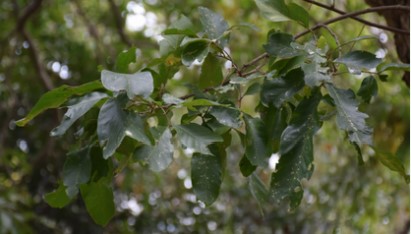| Kannada Name : | Antuvaala |
| Common Name : | South Indian soapnut |
| Family Name : | Sapindaceae |
| Scientific Name : | Sapindus laurifolius |
| Species Type : | Indigenous |
| Phenology : | Evergreen |
| Conservation Status : | Not known |
| Flowering Period : | November - January |
| Fruiting Period : | None |
| Origin : | India |
Uses
Kernel extracts of soapnut disrupt the activity of enzymes of larvae and pupae and inhibits the growth of the mosquito Aedes aegypti, an important vector of viral diseases.
Description
Large trees, up to 25 m, branchlets purplish brown, lenticellate. Leaves are compound, leaflets 1-4 pairs, subopposite, elliptic-oblong to elliptic-lanceolate or obovate, glabrous, pubescent on midrib, acute to truncate or rounded at the base, emarginate to acuminate at the apex. Inflorescence a terminal panicle. Flowers bisexual, greenish-white. Fruit is 2-3 lobed, velvety when young, hard and smooth when mature. Each cell has a 6-9 mm black, round seed, which is what is popular as a traditional washing soap.

